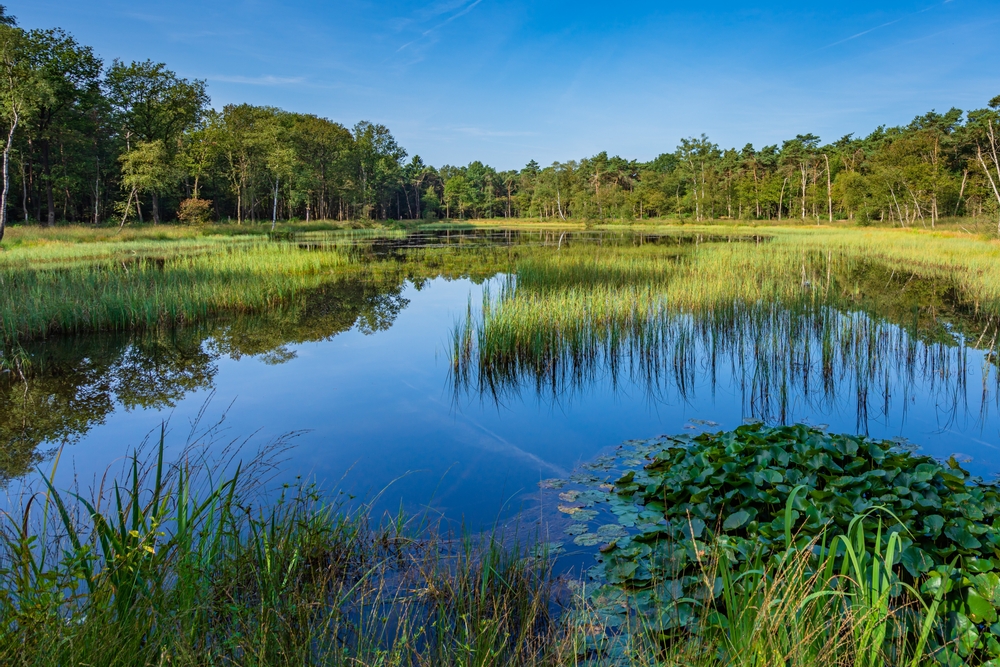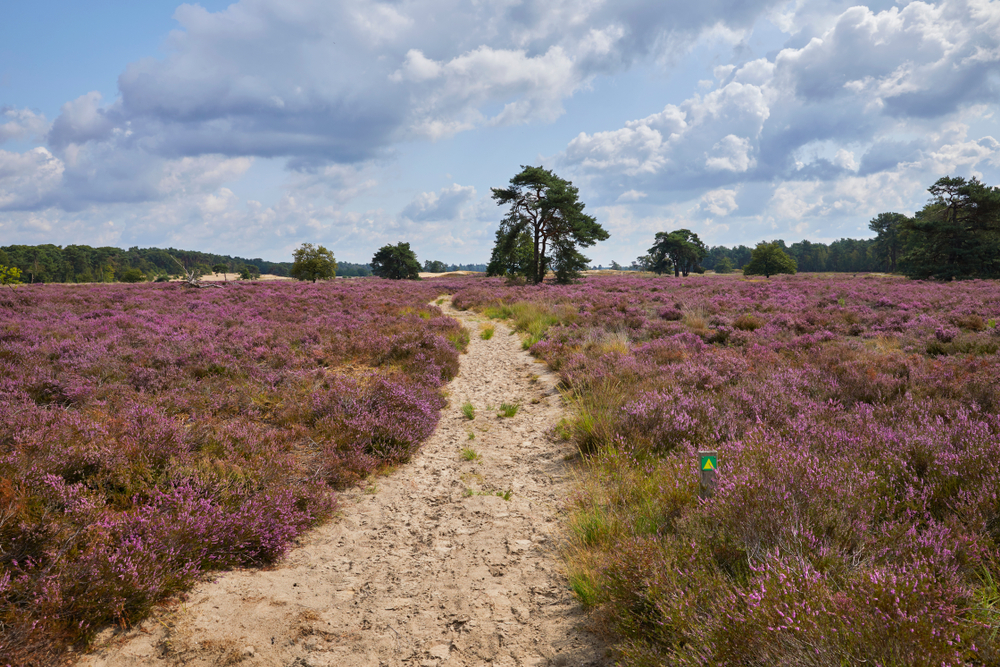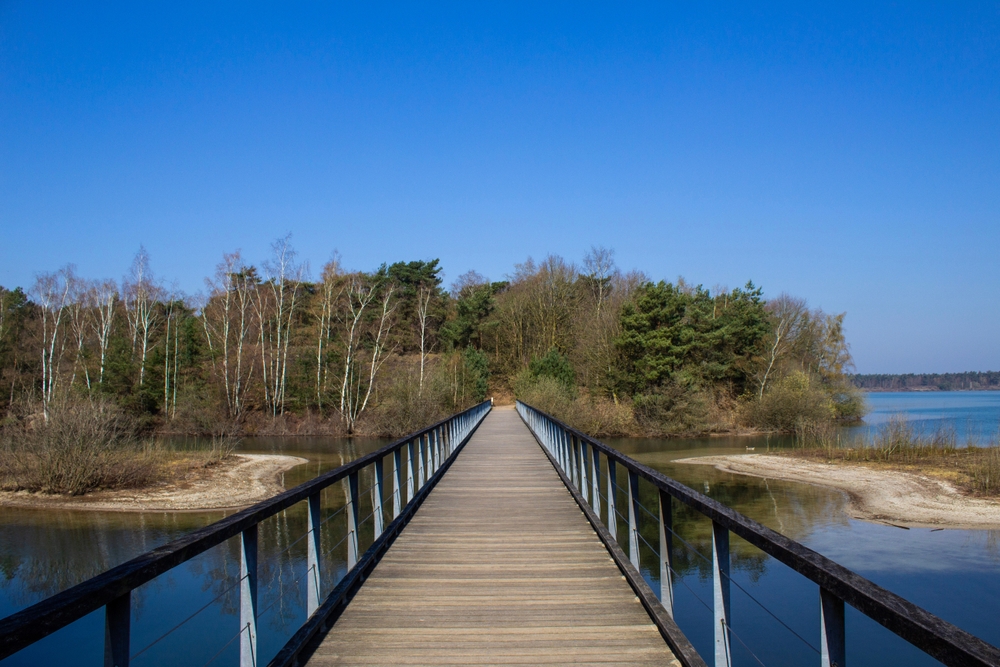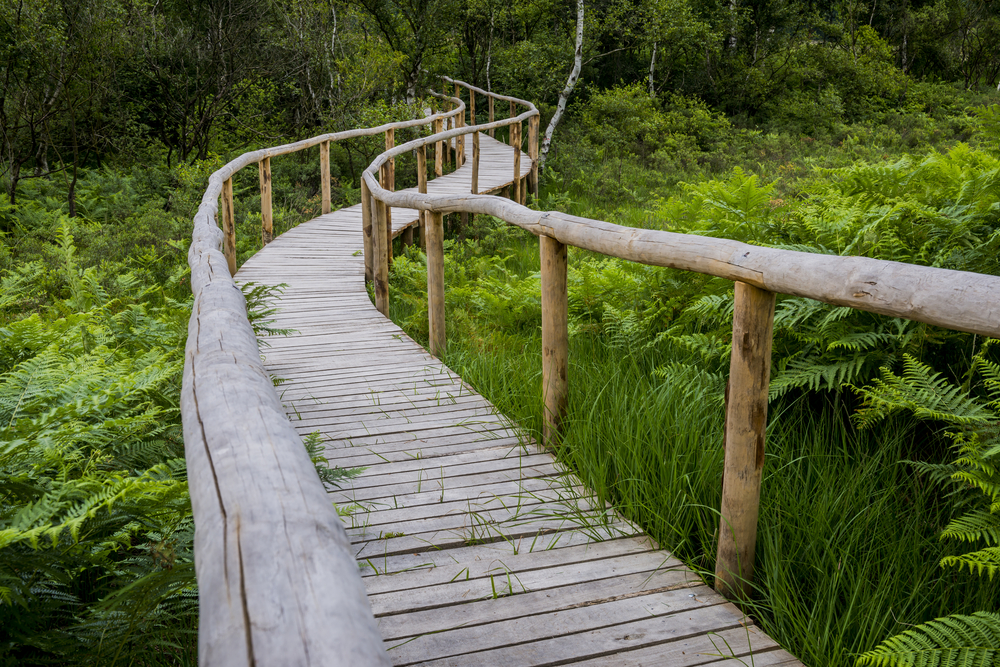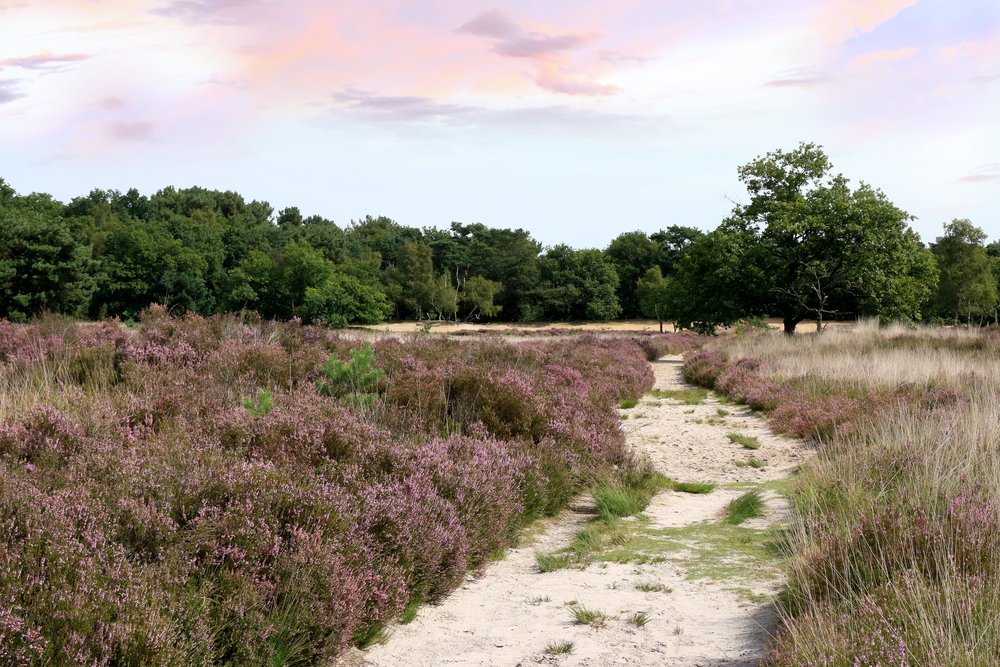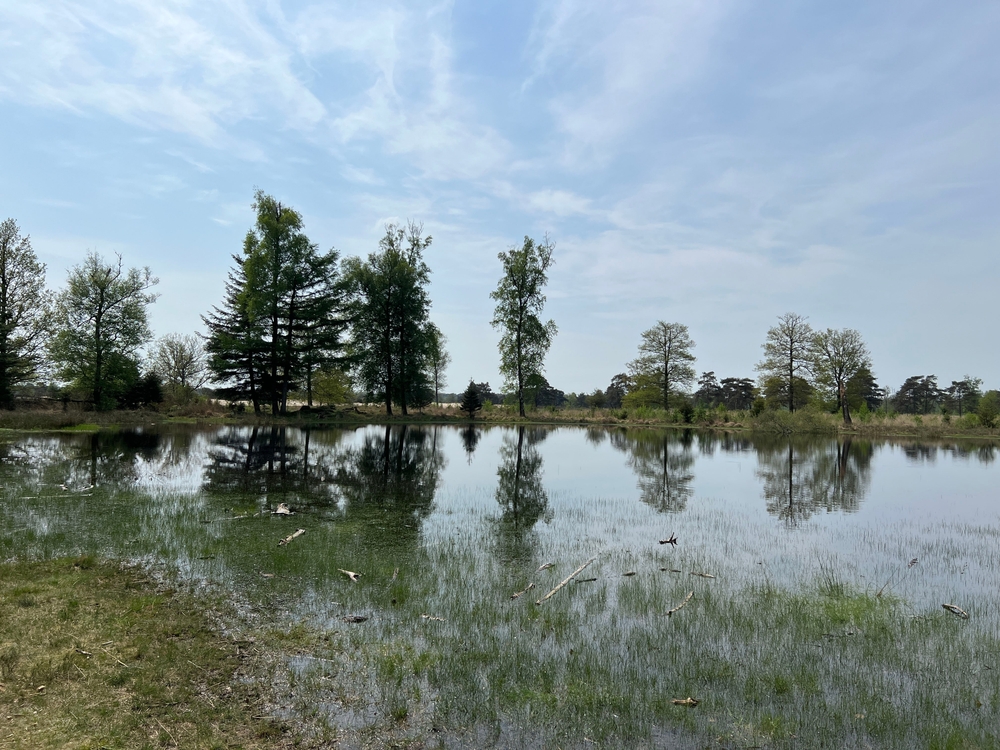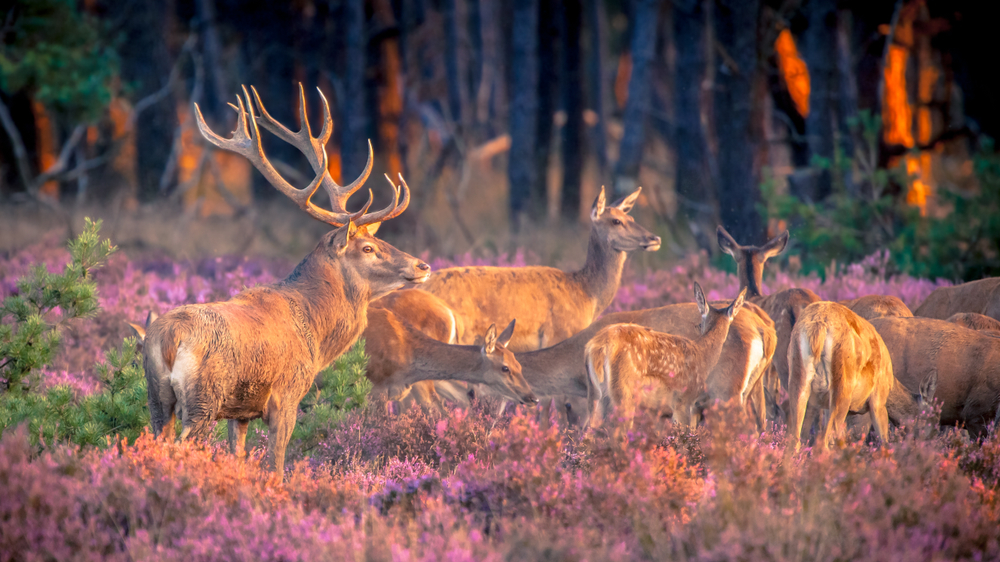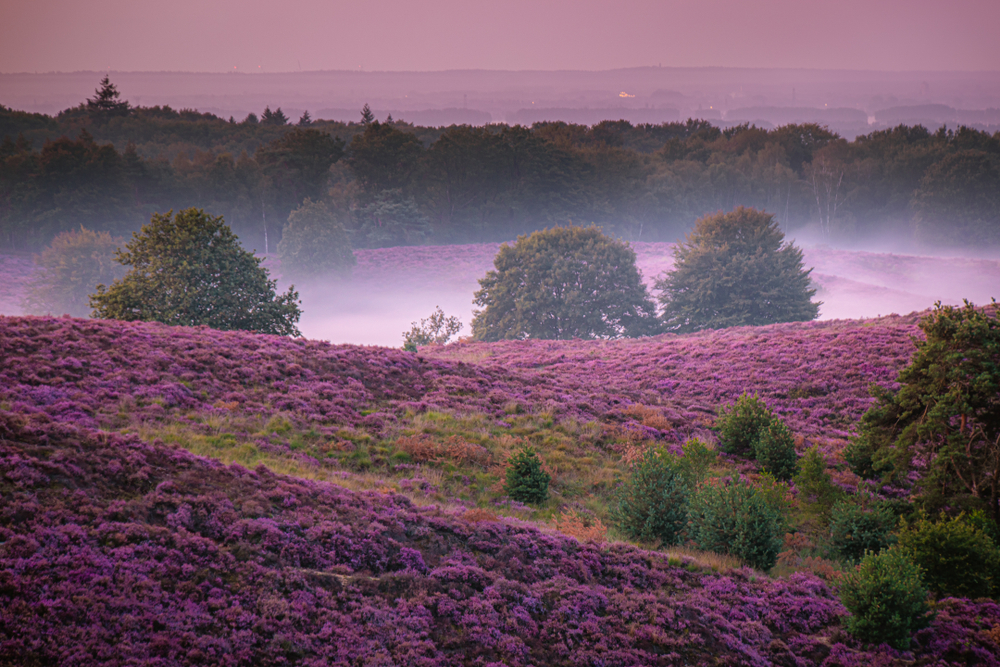Dwingelderveld Overview
Dwingelderveld National Park, known locally as Nationaal Park Dwingelderveld, is a serene and expansive nature reserve located in the province of Drenthe in the northeastern Netherlands.
Covering approximately 14,250 acres (57.7 square kilometers or 22.3 square miles), it is the largest wet heathland in Western Europe. The park is situated between the towns of Ruinen and Dwingeloo, offering a vast, unspoiled landscape that is unique in the Netherlands.
The terrain is characterized by wide-open heathlands, peat bogs, forests, and small lakes, creating a rich and varied environment that supports a diverse range of plant and animal species. It is particularly famous for its shifting landscapes, where seasonal changes dramatically transform the scenery. The Spier Observatory within the park provides visitors with an opportunity to take in breathtaking views over the heathlands.
The heathlands of Dwingelderveld are among the most defining features of the park. These landscapes are sustained by grazing sheep, including the iconic Drenthe Heath Sheep, which have been used for centuries to maintain the open heathland. Large areas of the park are covered in purple heather, which blooms in late summer, turning the landscape into a sea of vibrant colors.
In addition to the heathlands, the park contains extensive bogs and small fens, which create an important wetland habitat for many species. The surrounding forests add further variety, consisting mainly of Scots pine, birch, and oak, which offer a stark contrast to the open heathland. The park’s rolling hills and slight elevation changes are a result of glacial activity from the Ice Age, adding to the unique topography of the region.
Dwingelderveld National Park is home to a wide variety of wildlife, particularly species that thrive in heathland and wetland ecosystems. Visitors may spot roe deer, foxes, badgers, and hares roaming through the forests and open spaces. Amphibians and reptiles, including moor frogs and sand lizards, find refuge in the bogs and marshy terrain.
The park is also a birdwatcher’s paradise, with over 100 bird species recorded. Some of the most notable birds found in the park include the European nightjar, woodlark, great grey shrike, and black woodpecker. The presence of cranes in recent years has been an exciting development, signaling a healthy and well-preserved wetland environment. Butterflies and dragonflies are abundant, adding vibrant movement to the meadows and marshlands.
One of the park’s most popular attractions is its extensive network of hiking and cycling trails, which allow visitors to explore its stunning landscapes at their own pace. The Lheebroekerzand area is particularly favored for its shifting sand dunes, while the Kraloërheide heathlands provide expansive views that showcase the untouched beauty of the region.
The park is also well-known for stargazing, as its remote location and lack of light pollution create ideal conditions for observing the night sky. Guided tours, including ranger-led nature walks, are available to help visitors learn more about the park’s ecosystems and conservation efforts. Additionally, the historic Dwingeloo Radio Telescope, located on the park’s edge, adds a scientific and cultural dimension to a visit.
Conservation efforts in Dwingelderveld National Park have been highly successful, with active management strategies in place to preserve its delicate ecosystems. The restoration of wetlands and controlled grazing by sheep help maintain the balance of plant life, ensuring the continued survival of rare species.
Challenges remain, particularly concerning climate change, nitrogen deposition, and habitat fragmentation, but the park has implemented water management projects to sustain its unique bog habitats.
It is part of the Natura 2000 network, highlighting its importance as a protected area in the European Union. The combined efforts of conservationists, local communities, and park authorities ensure that Dwingelderveld remains a thriving natural sanctuary for future generations.








































































